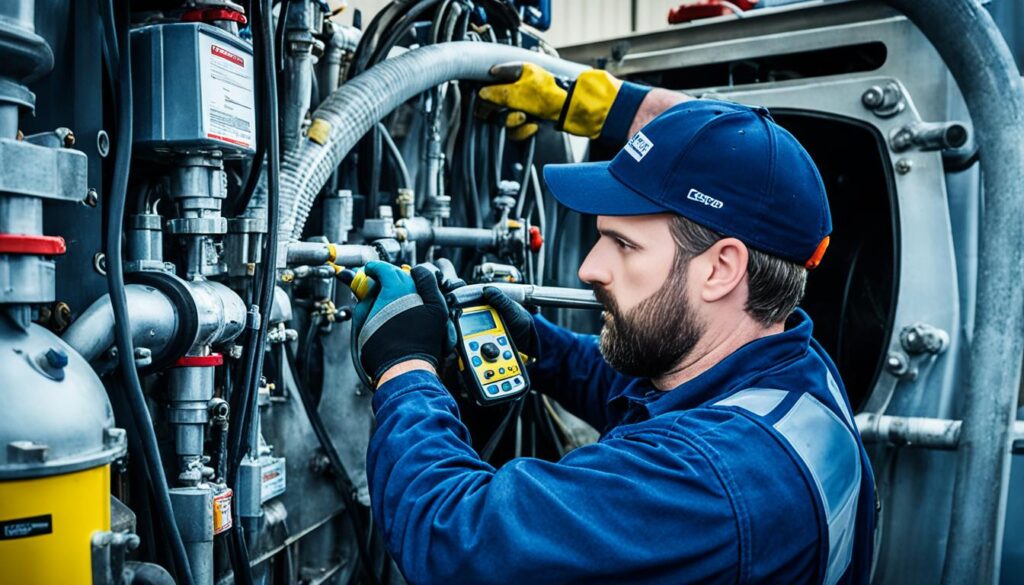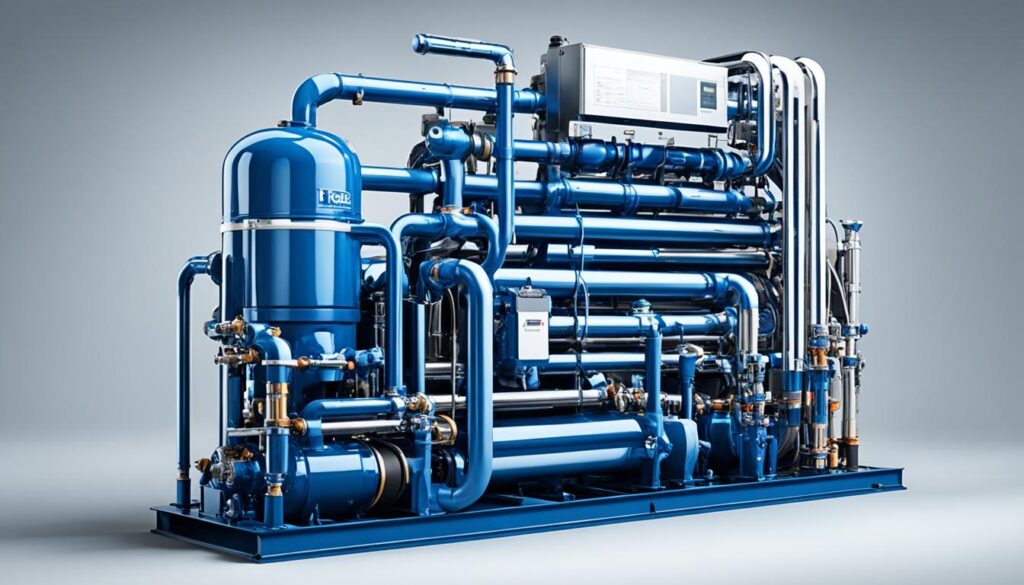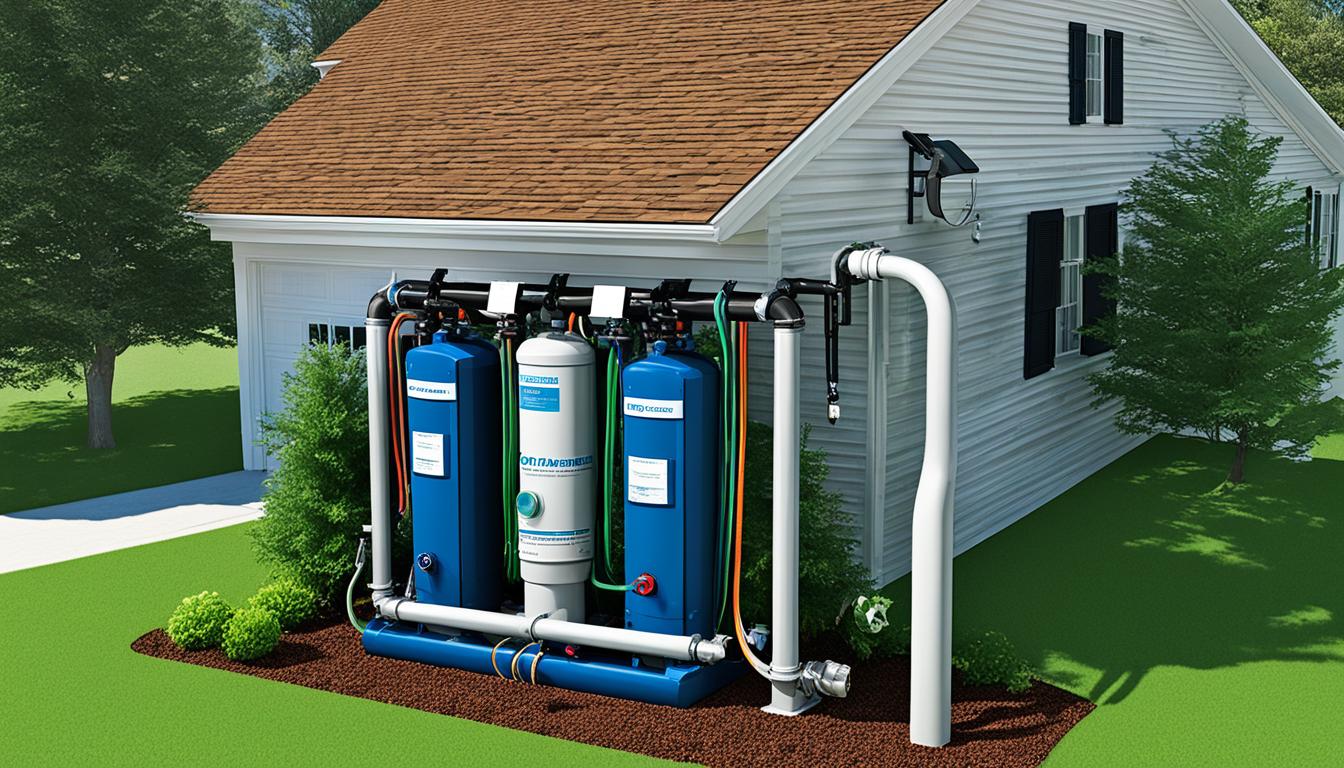This post contains affiliate links.
Did you know that a residential well pump system is crucial for ensuring a consistent and reliable water supply to your home? It’s an essential component that often goes unnoticed, but its impact is significant. Without a well pump system, you may face water shortages, low water pressure, and inconvenience. By optimizing your system, you can avoid these issues and ensure a seamless water supply for your daily needs.
Common Signs That Your Well Pump System Needs Optimization
Fluctuating water pressure and reduced water flow are common signs that your well pump system may need optimization. These issues can be caused by factors such as clogged filters, worn-out parts, or a malfunctioning pressure switch. Increased energy consumption can also indicate an inefficient system. It’s important to be proactive in identifying these signs and taking steps to address any issues before they escalate.
Fluctuating water pressure can disrupt daily activities, such as showering or running appliances, and can be frustrating to deal with. Reduced water flow can make tasks like watering your garden or filling up a pool a time-consuming process. These issues are often indicative of underlying problems within your well pump system that require attention.
A clogged filter is a common culprit behind fluctuating water pressure and reduced water flow. Over time, debris and sediment can accumulate in the filter, obstructing the flow of water. Regular filter cleaning or replacement is necessary to prevent these issues. Additionally, worn-out parts within the pump system, such as impellers or seals, can cause reduced water flow. These parts may need to be repaired or replaced to restore optimal performance.
Tip: If you notice any changes in your water pressure or flow, it’s a good idea to check your well pump system for any signs of wear and tear. Addressing maintenance and troubleshooting issues early on can help prevent further damage and costly repairs.
Another potential cause of fluctuating water pressure and reduced water flow is a malfunctioning pressure switch. The pressure switch is responsible for controlling when the pump turns on and off based on water demand. A faulty pressure switch can result in inconsistent pressure and flow. Troubleshooting the pressure switch and repairing or replacing it if necessary can effectively resolve these issues.
Furthermore, an inefficient well pump system may exhibit increased energy consumption. If you notice a sudden spike in your energy bills without any other explanation, it could be a sign that your system is working harder than necessary to meet your water needs. This increased energy consumption not only adds to your expenses but also indicates that your well pump system is not operating optimally.
By being proactive and attentive to these common signs, you can ensure early detection of potential problems in your well pump system. Regular maintenance, such as cleaning filters, inspecting and replacing worn-out parts, and testing the pressure switch, is crucial for optimizing the performance and efficiency of your system.
Now that you understand the common signs that indicate your well pump system needs optimization, it’s important to explore the benefits of optimizing your system. Section 3 will delve into the advantages of optimizing your well pump system and how it can enhance your overall water supply and cost savings.
| Common Signs Your Well Pump System Needs Optimization | Causes |
|---|---|
| Fluctuating water pressure | Clogged filters, worn-out parts, malfunctioning pressure switch |
| Reduced water flow | Clogged filters, worn-out parts, malfunctioning pressure switch |
| Increased energy consumption | Inefficient system |
Benefits of Optimizing Your Well Pump System
Optimizing your well pump system can provide numerous advantages that contribute to a reliable water supply and cost savings. By ensuring efficient installation, regular maintenance, and timely repairs, you can maximize the performance and longevity of your well pump system.
Consistent Water Supply for Various Purposes
An optimized well pump system guarantees a consistent water supply for essential purposes such as drinking, bathing, and irrigation. Whether you need water for daily household activities or outdoor landscaping, a well pump system ensures that you have an uninterrupted water source.
Energy Consumption Reduction
When your well pump system is optimized, it operates at maximum efficiency, resulting in reduced energy consumption. By minimizing energy usage, you can lower your utility bills and contribute to a more sustainable environment.
Cost Savings through Water Minimization
An optimized well pump system minimizes water wastage, leading to long-term cost savings. By preventing leaks, ensuring proper water pressure, and utilizing efficient fixtures, you can make the most of your water resources and reduce unnecessary expenses.
Prolonged Lifespan and Prevention of Costly Repairs
Regular maintenance and optimization practices significantly extend the lifespan of your well pump system, helping to avoid expensive breakdowns and repairs. By identifying and addressing potential issues early on, you can prevent major breakdowns and the need for emergency repairs.
| Benefits | Explanation |
|---|---|
| Consistent Water Supply | Guarantees a reliable water source for various household activities and irrigation needs. |
| Energy Consumption Reduction | Minimizes energy usage, resulting in lower utility bills and environmental impact. |
| Cost Savings | By minimizing water wastage, you can save on water bills and reduce unnecessary expenses. |
| Prolonged Lifespan | Ongoing maintenance and optimization improve the longevity of your well pump system, avoiding costly breakdowns and repairs. |
An optimized well pump system ensures a reliable water supply, reduces energy consumption, saves costs, and extends the lifespan of your system. By prioritizing well pump installation, regular maintenance, and prompt repairs, you can enjoy the benefits of an efficient and dependable well pump system for years to come.

Tips for Optimizing Your Well Pump System
To ensure the optimal performance of your well pump system, it’s crucial to follow a variety of maintenance, troubleshooting, and energy-saving strategies. By implementing these tips, you can maximize the efficiency of your system and avoid costly repairs.
Hire a Professional Well Inspector
Bringing in a professional well inspector to assess the condition of your well is a critical first step in optimizing your system. They have the expertise to identify any potential issues or areas for improvement. Additionally, regular tests for contaminants should be conducted to ensure the water quality remains safe and suitable for consumption.
Check the Motor and Pump Intake
Regularly inspecting the motor for damage is essential to prevent any major malfunctions. Look for signs of wear and tear, such as frayed wires or loose connections, and address them promptly. Additionally, cleaning the pump intake is crucial to prevent clogs and ensure optimal water flow. Remove any debris or sediment that may have accumulated over time.
Upgrade to an Energy-Efficient Pump
Consider upgrading your well pump to a more energy-efficient model. These pumps are designed to minimize energy consumption while still delivering adequate water pressure. By making this switch, not only will you contribute to a greener environment, but you will also save on your electricity bills in the long run.
Install Water-Efficient Fixtures
Water conservation is an essential aspect of optimizing your well pump system. Installing water-efficient fixtures, such as low-flow showerheads and faucets, can significantly reduce water usage without compromising functionality. Additionally, fixing any leaks in your plumbing system will contribute to water conservation efforts and prevent unnecessary strain on your pump system.
Optimizing your well pump system requires a combination of professional inspection, regular maintenance, and energy-saving practices. By following these tips, you can ensure the longevity and efficiency of your well pump system, ultimately saving you time, money, and resources.

| Optimization Tips | Description |
|---|---|
| Hire a Professional Well Inspector | Assess the condition of your well and conduct tests for contaminants. |
| Check the Motor and Pump Intake | Regularly inspect the motor for damage and clean the pump intake to prevent clogs. |
| Upgrade to an Energy-Efficient Pump | Switch to a pump that minimizes energy consumption while maintaining water pressure. |
| Install Water-Efficient Fixtures | Use low-flow showerheads and faucets, and fix any leaks in your plumbing system. |
Implementing these tips will help you optimize your well pump system, ensuring reliable water supply, energy efficiency, and cost savings in the long run.
Importance of Regular Maintenance for Well Pump Optimization
Regular maintenance is crucial for ensuring the optimal performance and longevity of your well pump system. Neglecting routine maintenance tasks can lead to costly repairs, decreased efficiency, and potential water supply issues. By prioritizing maintenance and addressing any emerging problems promptly, you can prevent further damage, optimize your system, and avoid unnecessary expenses.
A well-maintained well pump system operates efficiently and reliably, providing you with a consistent water supply for your daily needs. Regular maintenance helps identify and resolve potential issues before they escalate into major problems that could disrupt your water flow or cause system failure. It also allows you to maximize the lifespan of your well pump, reducing the need for frequent repairs or premature replacement.
Benefits of Regular Maintenance:
- Prolongs the lifespan of your well pump system
- Prevents costly repairs
- Optimizes water flow and pressure
- Minimizes energy consumption
- Reduces the risk of water contamination
Regular maintenance involves several key tasks to keep your well pump system in optimal condition. These tasks include:
- Inspecting and cleaning the pump intake: Over time, debris, sediment, and mineral deposits can accumulate in the pump intake, hindering water flow. Regular cleaning ensures unrestricted water supply and reduces strain on the pump.
- Checking the pressure switch: The pressure switch controls the activation and deactivation of the pump. Regular inspection ensures it is functioning correctly, preventing issues such as inconsistent pressure or frequent cycling.
- Testing the water pressure: Monitoring water pressure helps detect any anomalies in the system, such as low pressure, which may indicate a problem with the well or the pump.
- Inspecting electrical connections: Loose or corroded electrical connections can lead to pump failure or reduced efficiency. Regular inspection and tightening of connections ensure proper functioning of the system.
While some maintenance tasks can be performed by homeowners, others may require professional assistance. It is essential to follow the manufacturer’s maintenance guidelines and consult a qualified well pump technician when necessary.
“Regular maintenance is the key to a reliable and efficient well pump system. By investing in proper care and addressing issues promptly, homeowners can ensure a steady water supply and avoid costly repairs.”
By prioritizing regular maintenance for your well pump system, you can optimize its performance, minimize the risk of breakdowns, and extend its lifespan. Remember to keep a record of maintenance activities and schedule routine inspections to maintain the health and efficiency of your well pump system for years to come.

Overcoming Efficiency Challenges in Well Pump Systems
A well pump system may face efficiency challenges due to various factors, including the accumulation of debris and mineral deposits, pump size to pipe size mismatch, and issues with the pressure tank. These challenges can result in reduced performance and increased energy consumption.
To overcome these efficiency challenges and optimize your well pump system, several strategies can be implemented:
- Regular Maintenance: Regular maintenance is crucial in preventing the buildup of debris and mineral deposits that can compromise the performance of your well pump system. By scheduling routine inspections and cleanings, you can ensure a steady supply of clean water and improve overall efficiency.
- Correct Pump Size and Proper Installation: The selection of the right pump size and proper installation of pipes are vital for optimizing water pressure and flow rate. Pump size to pipe size mismatch can lead to inefficiencies and decreased performance. Consulting with a professional for the correct pump sizing and ensuring proper installation can significantly improve the efficiency of your well pump system.
- Investing in a Reliable Pressure Tank: The pressure tank plays a crucial role in maintaining consistent water pressure in your well pump system. By investing in a reliable pressure tank with appropriate pressure settings, you can prevent pressure fluctuations, optimize system performance, and improve overall efficiency.
By implementing these strategies and addressing efficiency challenges, you can optimize your well pump system’s performance, enhance its energy efficiency, and ensure a reliable supply of water for your home.
For a visual representation of the efficiency challenges and corresponding solutions for optimizing well pump systems, refer to the table below:
| Efficiency Challenges | Optimization Solutions |
|---|---|
| Accumulation of debris and mineral deposits | Regular maintenance, inspections, and cleanings |
| Pump size to pipe size mismatch | Consultation with a professional for correct pump sizing and proper installation |
| Issues with the pressure tank | Investing in a reliable pressure tank with appropriate pressure settings |

Conclusion
Optimizing your well pump system is essential for ensuring a consistent and reliable water supply while minimizing energy consumption and costs. By following maintenance, troubleshooting, and energy-saving strategies, you can maximize the efficiency of your well pump system.
Regular inspections, proper installation, and monitoring pressure settings are key steps in optimizing your system. Conducting routine checks for clogged filters and worn-out parts will help identify and address issues before they escalate, ensuring uninterrupted water flow and preventing costly breakdowns.
With an optimized well pump system, you can enjoy a hassle-free water supply and peace of mind for years to come. It is recommended to consult a professional for assistance in optimizing your well pump system. They can provide expert guidance, ensure proper installation, and offer tailored recommendations to suit your specific needs.
FAQ
What is a well pump system?
A well pump system is a mechanism that extracts water from an underground source, such as a well, and delivers it to a residential property.
Why is it important to optimize a well pump system?
Optimizing a well pump system ensures a consistent water supply, reduces energy consumption, and extends the lifespan of the system.
What are the common signs that a well pump system needs optimization?
Common signs include fluctuating water pressure, reduced water flow, increased energy consumption, and malfunctioning pressure switches.
What are the benefits of optimizing a well pump system?
Optimizing a well pump system ensures a consistent water supply, saves on energy costs, and prevents costly breakdowns and repairs.
What are some tips for optimizing a well pump system?
Tips include hiring a professional well inspector, conducting regular tests, checking the motor for damage, cleaning the pump intake, and upgrading to an energy-efficient pump.
How important is regular maintenance for well pump optimization?
Regular maintenance is crucial for keeping a well pump system in top shape, preventing costly repairs, and maintaining efficiency.
What are the efficiency challenges in well pump systems?
Efficiency challenges can include debris and mineral deposits, pump size to pipe size mismatch, and pressure tank issues.
Source Links
- https://perryspumprepair.com/blog/how-to-improve-well-pump-efficiency/
- https://www.21stpump.com/3-tips-for-getting-the-most-out-of-your-well-pump/
- https://carolinawellandpump.com/maximizing-efficiency-tips-for-optimizing-your-well-and-pump-system/
This post contains affiliate links.

